Ferrari wrap. Ferrari F8 Wrapped in Film: Wrapping a Ferrari with Polyurethane Paint Protection Film PPF
It’s best to take care of the protection of your vehicle’s paintwork immediately after purchase, especially if it’s a sports car. Imagine how disappointing it would be if, just a month after driving your brand-new Ferrari, you noticed noticeable scratches and scuffs.
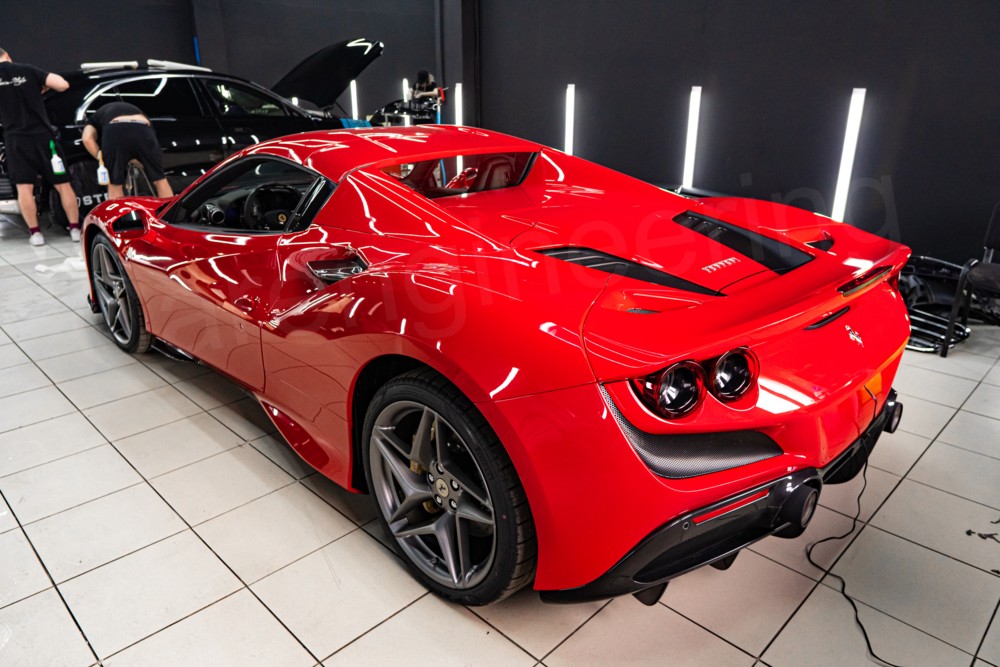
You can cover a car with various materials: ceramic, liquid glass, or film. Wrapping a Ferrari F8 in film is the most effective way to protect the vehicle from mechanical damage such as scratches and scuffs.
Why Ceramic Coating Falls Short Compared to Protective Film
Ceramic coating is a hard compound with a thickness of only a few microns, so it can’t protect the vehicle’s surface from mechanical impacts. The only thing ceramic coating protects against is oxidizers and road chemicals. It serves merely as a barrier against the influence of reagents.
Film, due to its properties such as thickness, elasticity, and resilience, protects the paint from scratches, scuffs, chips, abrasive materials, and chemicals. Moreover, while film requires no maintenance after application, ceramic coating does. Even with regular and proper washing, it lasts on the body for just over a year and doesn’t provide the level of protection expected.
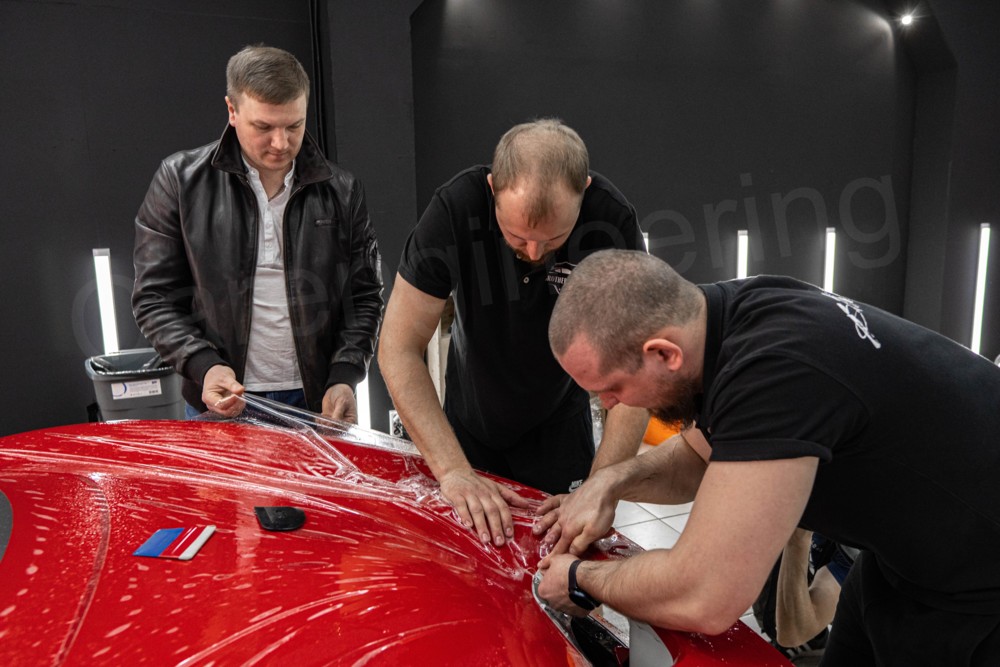
Therefore, if your goal is to protect the vehicle and maintain its showroom appearance, anti-gravel film for paint protection is the best option. Below, we will review the different types of film and how they differ.
Polyurethane vs. Vinyl Film for Ferrari: Which is Better for Car Protection
At CarEngineering, we offer two types of films: vinyl and polyurethane. Vinyl and polyurethane have different characteristics. For example, vinyl is more commonly used for tuning, offering a wide palette of colors, including gloss, matte, and pearlescent finishes. In terms of protective properties, “colored” vinyl can only withstand minor impacts from sand, branches, chemicals, and careless washing.
Polyurethane is a denser film, providing superior protection. For a clear comparison with vinyl, refer to the table below. Polyurethane outperforms vinyl in all respects, which is why it is chosen for vehicle protection. The film is completely transparent but also comes in gloss, matte, and black lacquer options. If you want to add a unique touch to your sports car, consider matte film. Matte film on a Ferrari will also be less prone to fingerprints, making it even more practical and attention-grabbing. After all, matte-finished cars are relatively rare and always look uniquely attractive.
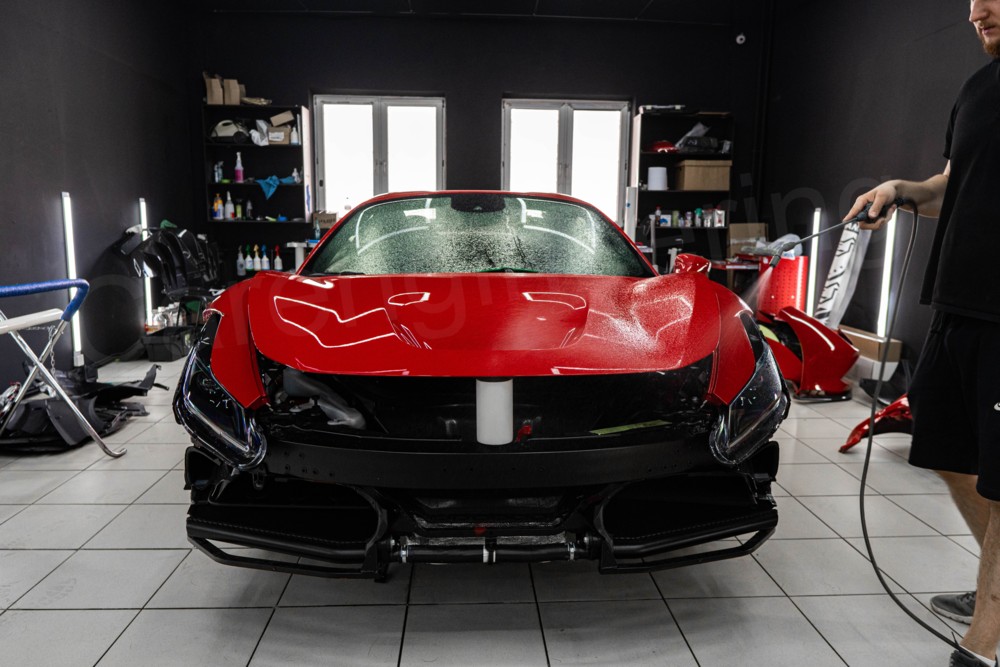
To schedule a car wrap, call ☎️ 056 666 5810. We will help you choose the right protection and recommend high-quality film.
Complete vs. Partial Car Wrapping
You can choose between full or partial wrapping. However, when it comes to a sports car, preserving the integrity of the entire vehicle is paramount. With partial wrapping, the sports car remains vulnerable. For example, if the rear bumper is not wrapped, it will be the paintwork that suffers from any accidental scratches. But if the car is fully wrapped, it not only maintains its perfect appearance but also saves the owner time on repairing unwanted damage. That’s why for sports cars, a full-body wrap including the hood, front and rear bumpers, roof, and lights is recommended.

Ferrari F8 in Glossy Film: Wrapping Process
To ensure high-quality work, a suitable environment is essential. At CarEngineering, we have just that. At our studio located at 36 Obrucheva St., building 2, we account for all details.
We do not conduct car cleaning and film application procedures simultaneously to keep the space in the cleanest possible condition. Regular wet cleaning and adherence to all requirements for quality wrapping are maintained. Proper temperature is controlled using steam generators to help the adhesive activate and bond correctly with the car’s surface.
During the wrapping process, we consider all details to ensure the sports car wrapped in film looks flawless, and no one would suspect its presence.
Now let’s take a closer look at the wrapping stages. With matte film, the process is identical, but the result will be perfectly matte.
1. Preparing the Car for Wrapping
At this stage, the car is thoroughly cleaned, washed, and treated to ensure no particles interfere with the film adhering properly. One of the most important steps here is disassembling the car.
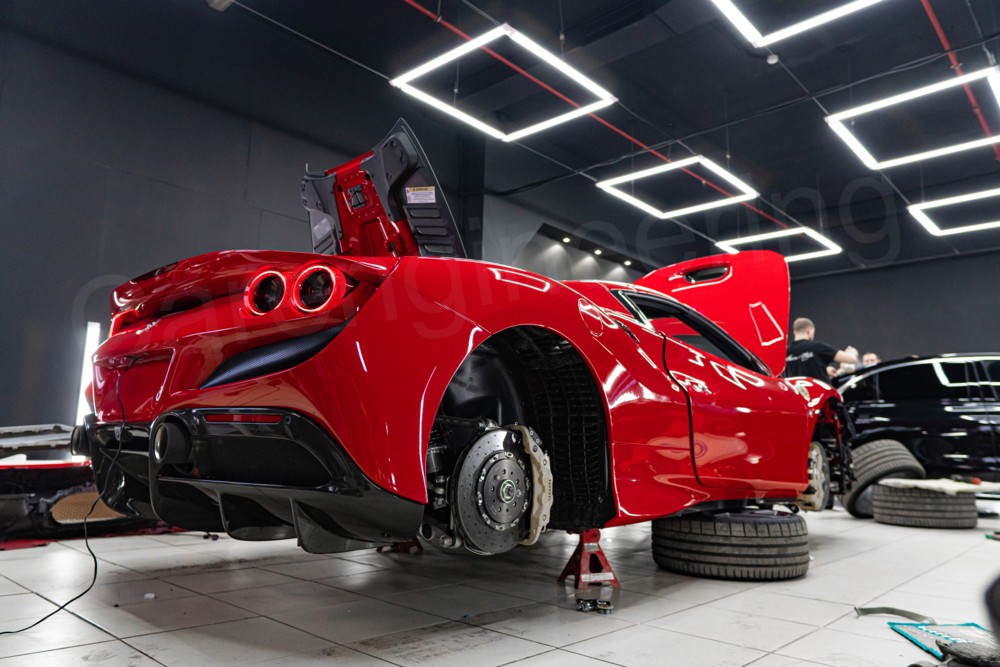
Disassembly allows us to remove “invisible” dirt from hard-to-reach places and to tuck the film under each part.
2. Wheels and mirrors were removed for black painting
Tucking the film is crucial for protecting the car. If the film is applied only on the surface without leaving an overlap, any small stone, sand grain, or strong water pressure can cause the film to peel off. Once the film on the Ferrari F8 starts peeling, it cannot protect the body from even scratches.
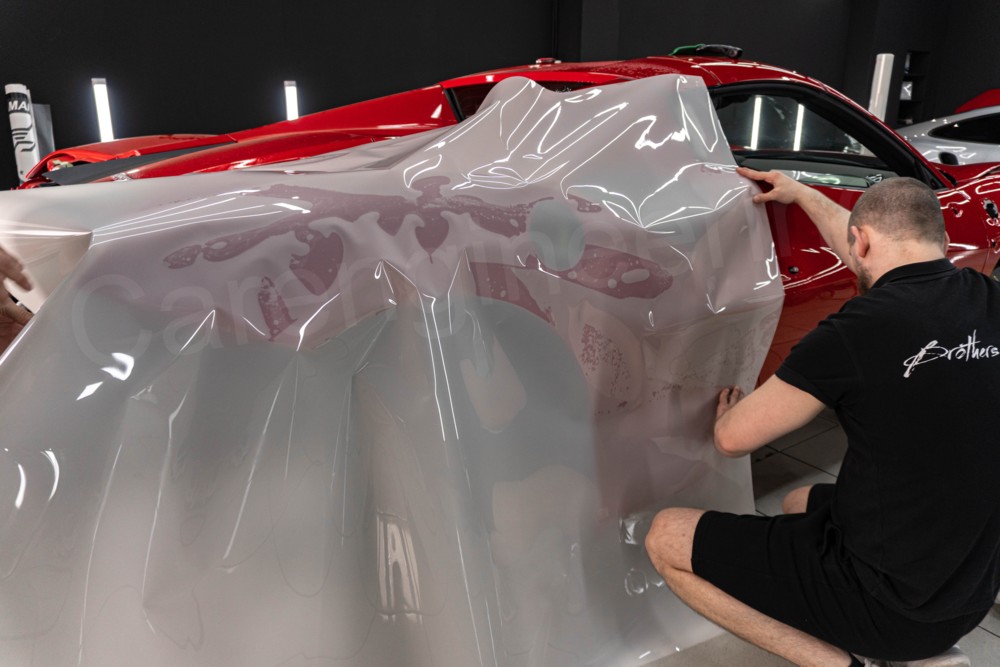
Therefore, the answer to the question “Can the car be wrapped without disassembly?” is no. Quality wrapping cannot be achieved otherwise, and for us, quality is the most important aspect of our work.
3. Ferrari Wrapping Process
Firstly, the film is fitted to the car, and the material is trimmed with an allowance to ensure proper tuck and long-lasting adhesion without peeling.
The film is applied using a wet method with a soapy solution to reduce adhesive adhesion upon contact with the surface. This allows for moving the film for optimal alignment with the contours of the parts.
Afterwards, the film is smoothed out with rubber squeegees, excess air bubbles and liquid are removed. As a result, the film will not slide off the body and will provide reliable protection for each part.
Care for the Sports Car Wrapped in Film
Immediately after wrapping, we recommend waiting at least a week before washing the car in summer and at least two weeks in winter. Otherwise, caring for a Ferrari with film is similar to regular maintenance of a car’s paintwork.
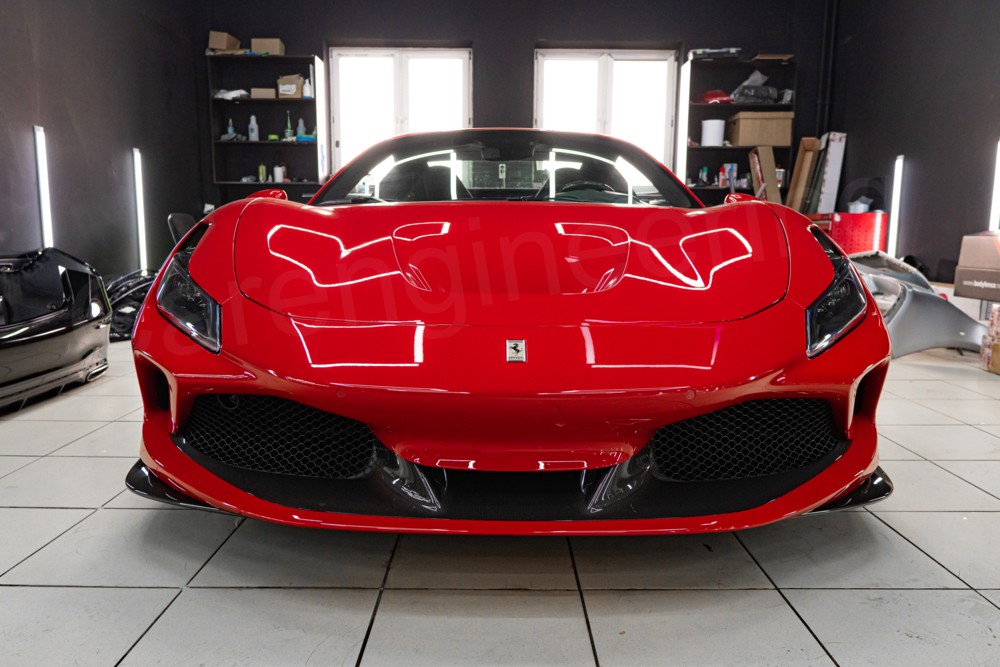
Don’t forget to wash the car periodically and, if possible, remove organic contaminants, especially bird droppings, as they can negatively affect the film just like they do on the car’s paint.
Polyurethane film does not require polishing. Even if scratches appear, they will disappear on their own after the car has been exposed to the sun for a few hours. Self-healing is one of the main advantages of polyurethane film.
CarEngineering’s Warranty
A week after the wrapping, we will invite you for a free wash. We will recheck the film to ensure everything is in order and your car is reliably protected. This is our key advantage — we focus on results and care for each client!

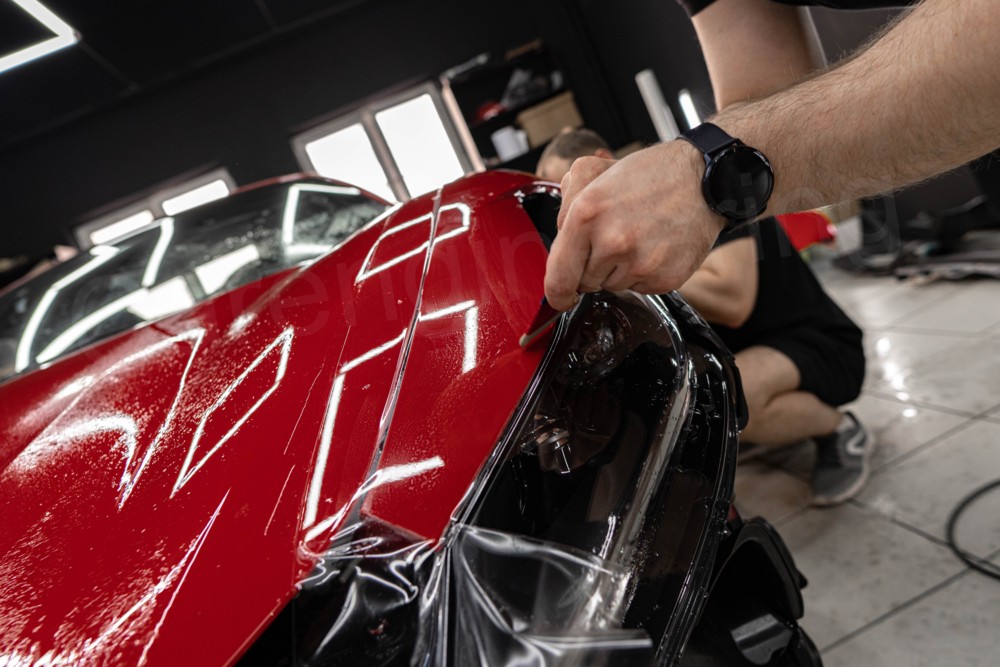
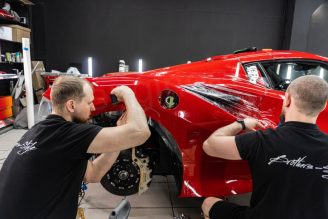
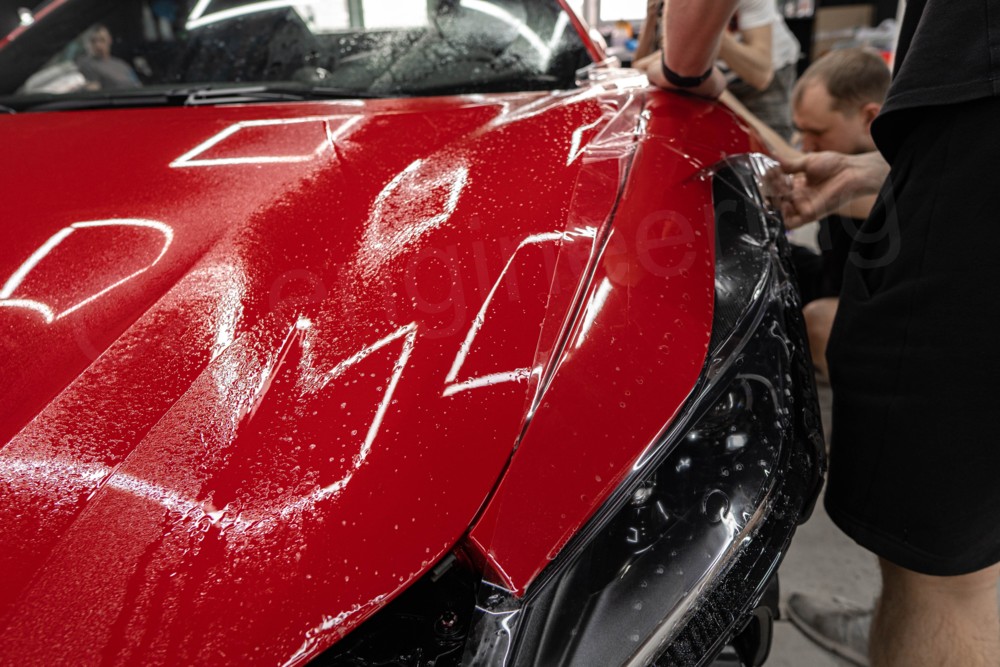
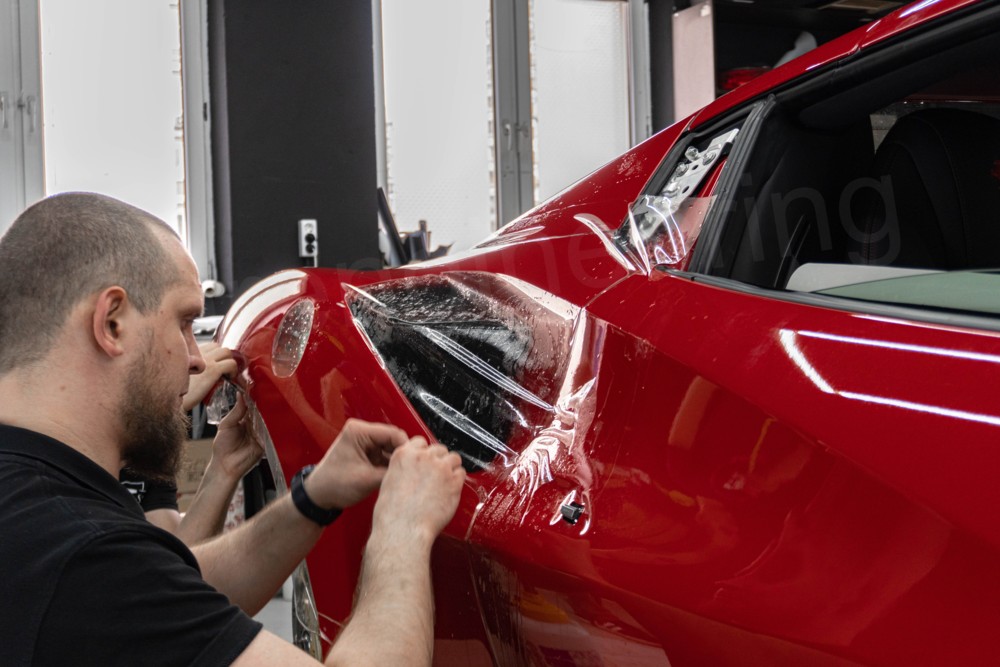

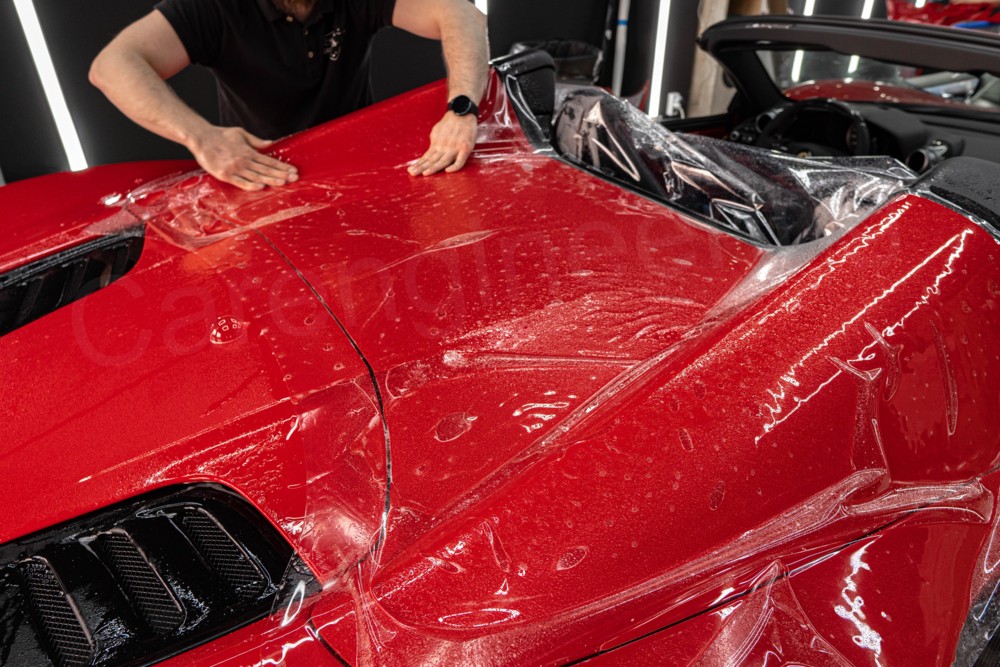
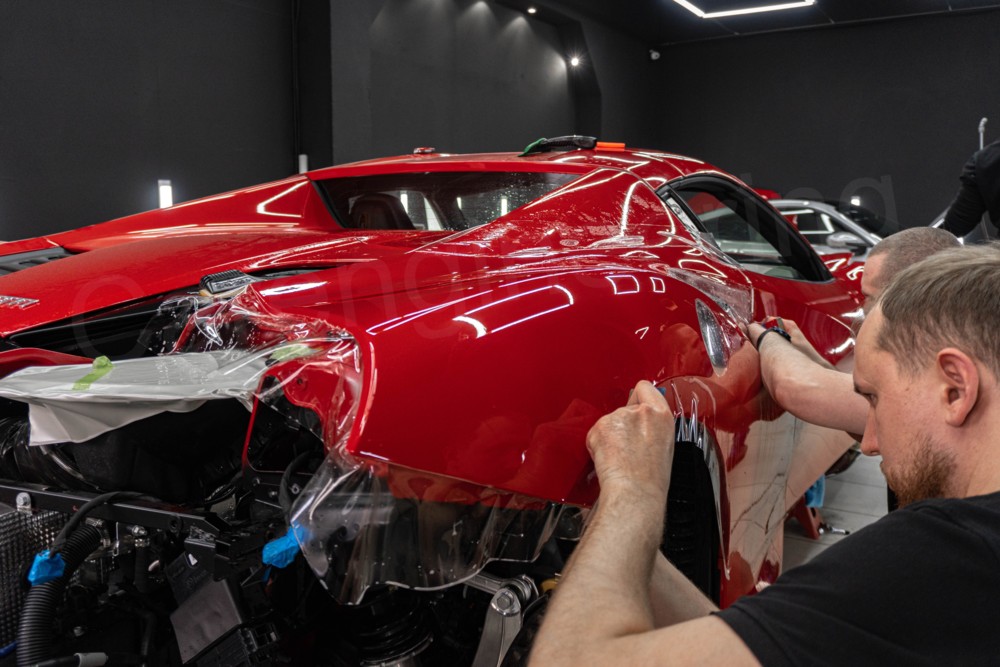
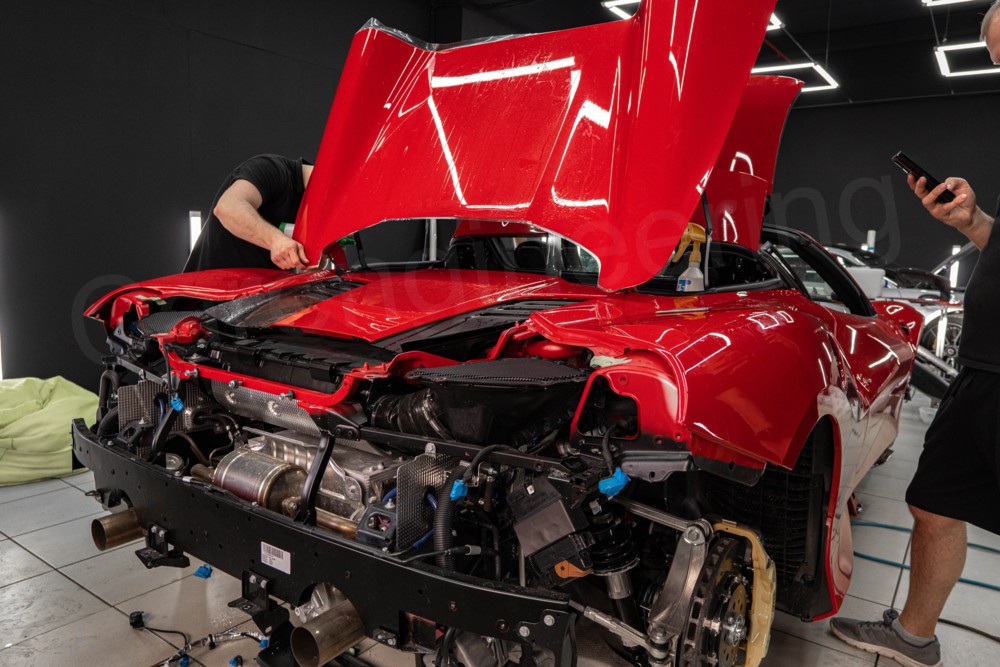
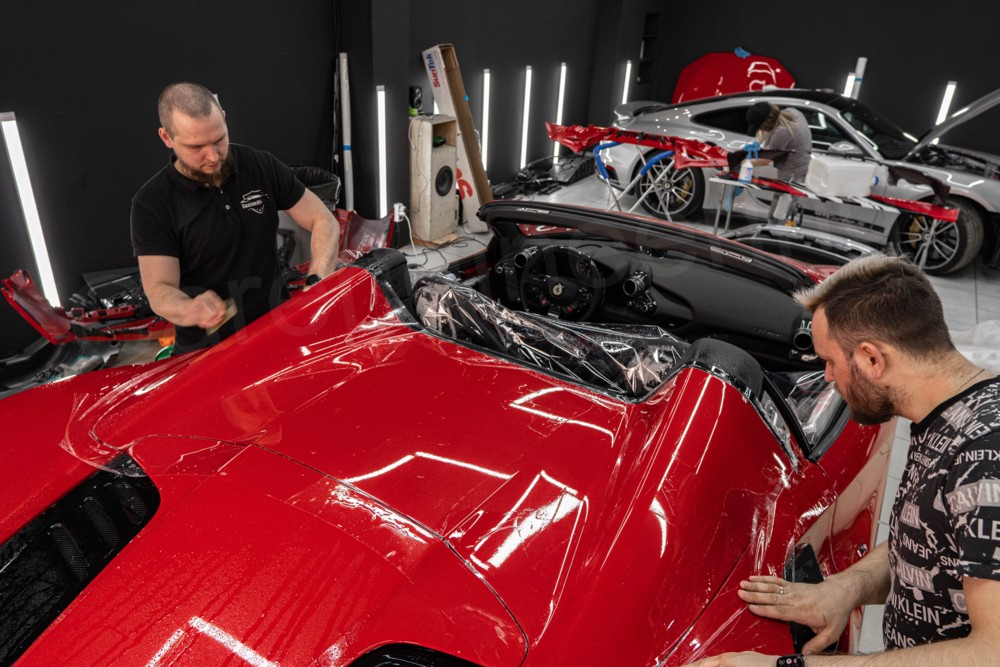
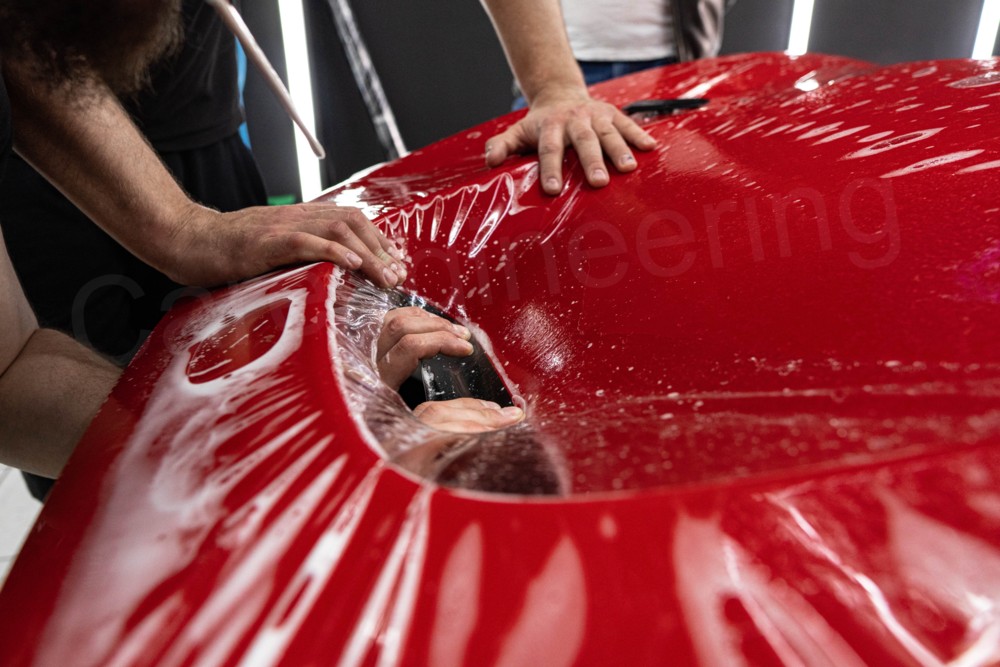
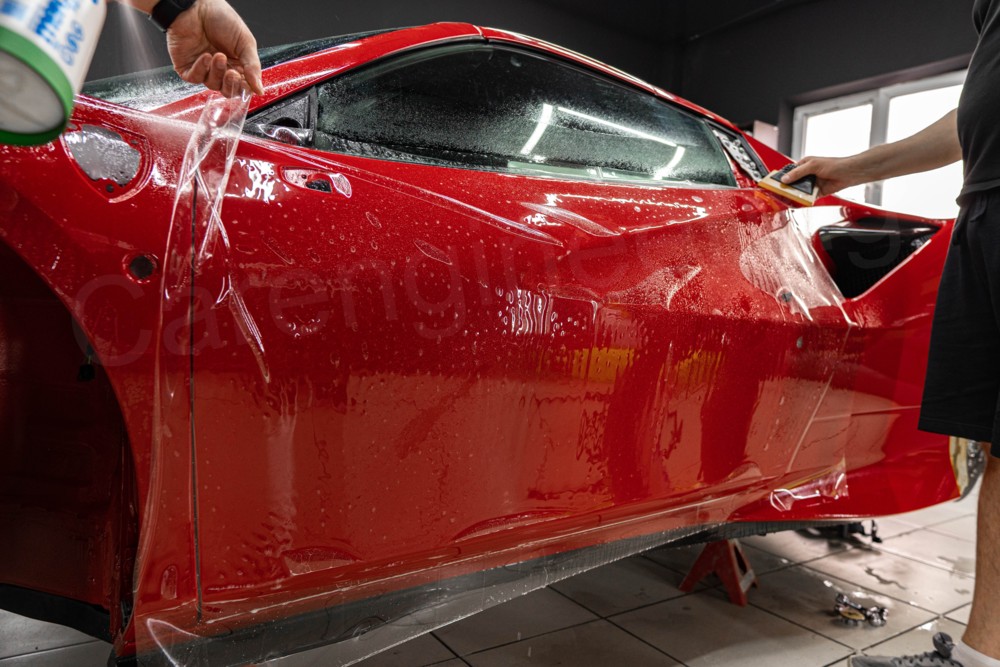

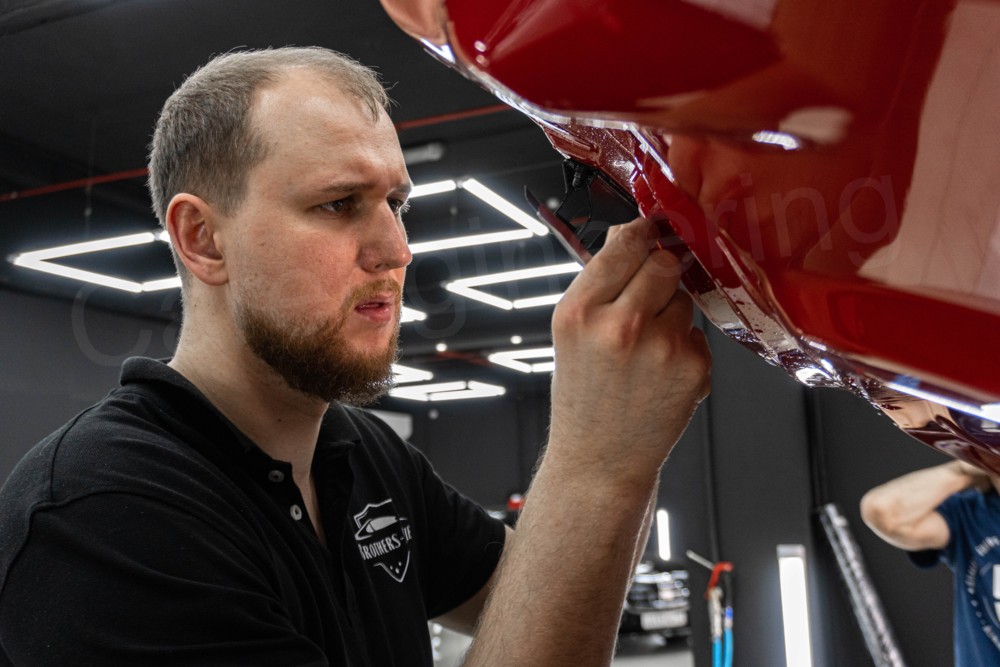
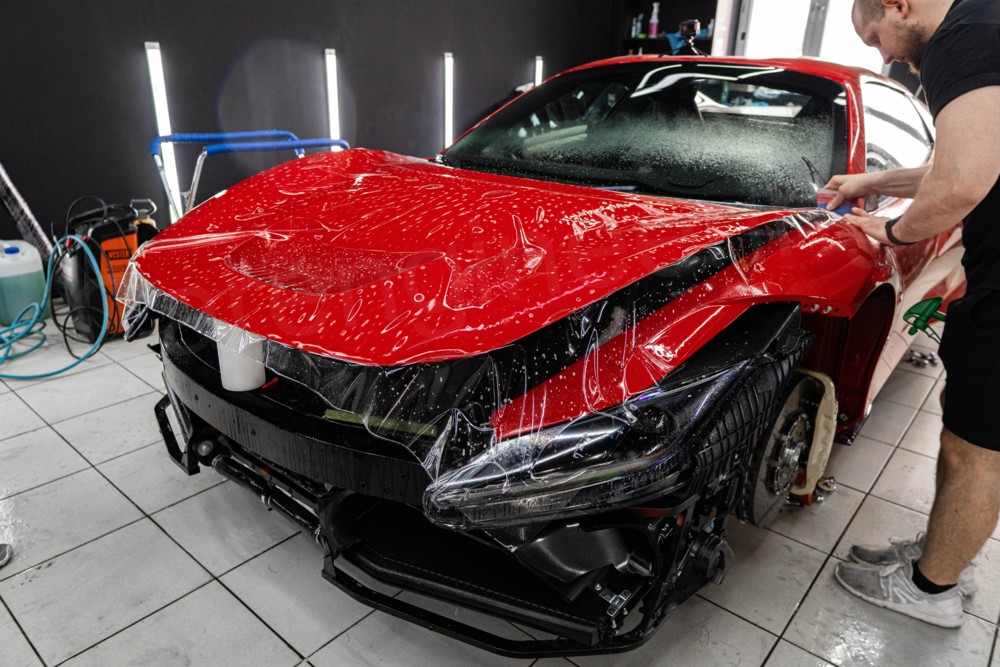

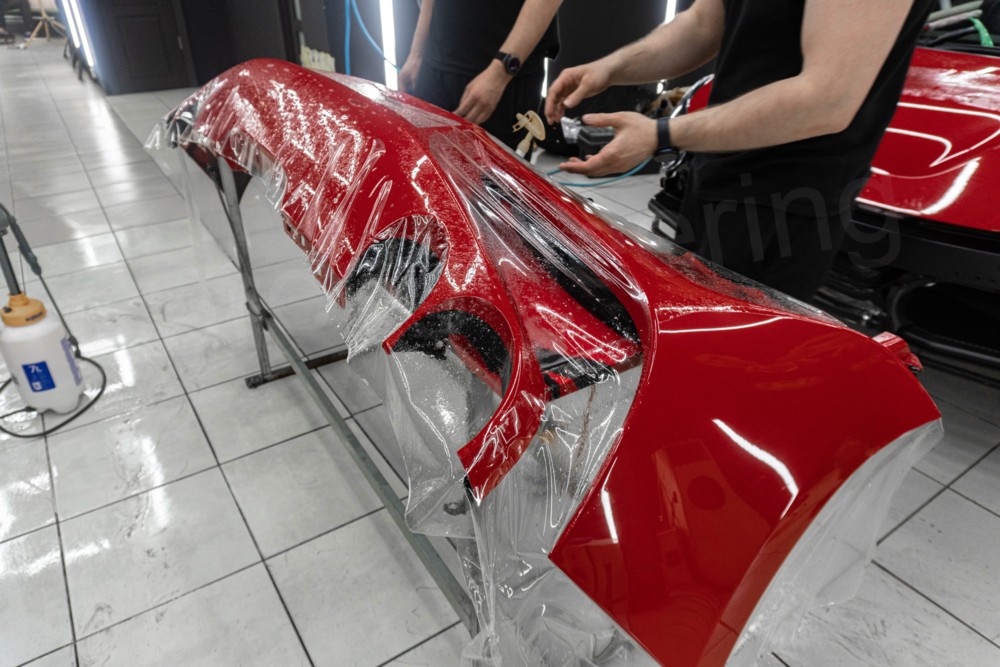
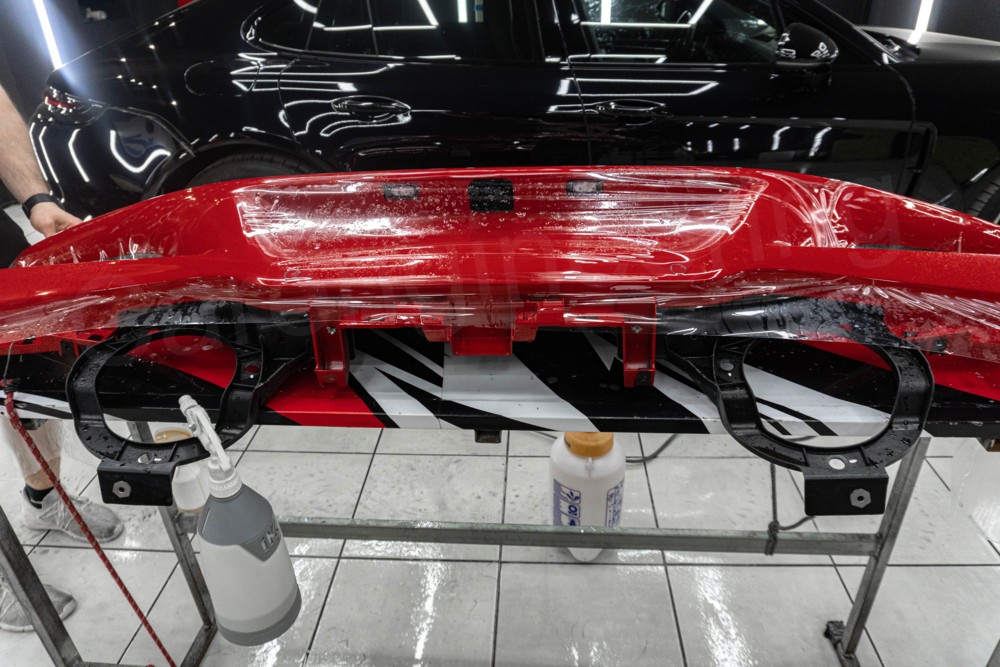
We will be glad to work with your car. Please contact us
☎️ 056 666 5810
📞 Whatsapp +971 56 666 58 10
We are located in Dubai – link – Al Quoz 2
Videos Worth Watching:

